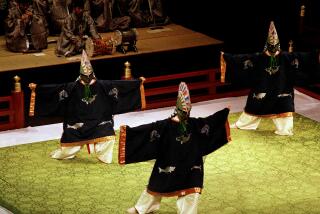Newsletter: Essential Arts: Will ‘La Bohème’ distract L.A. opera audiences from Plácido’s troubles?
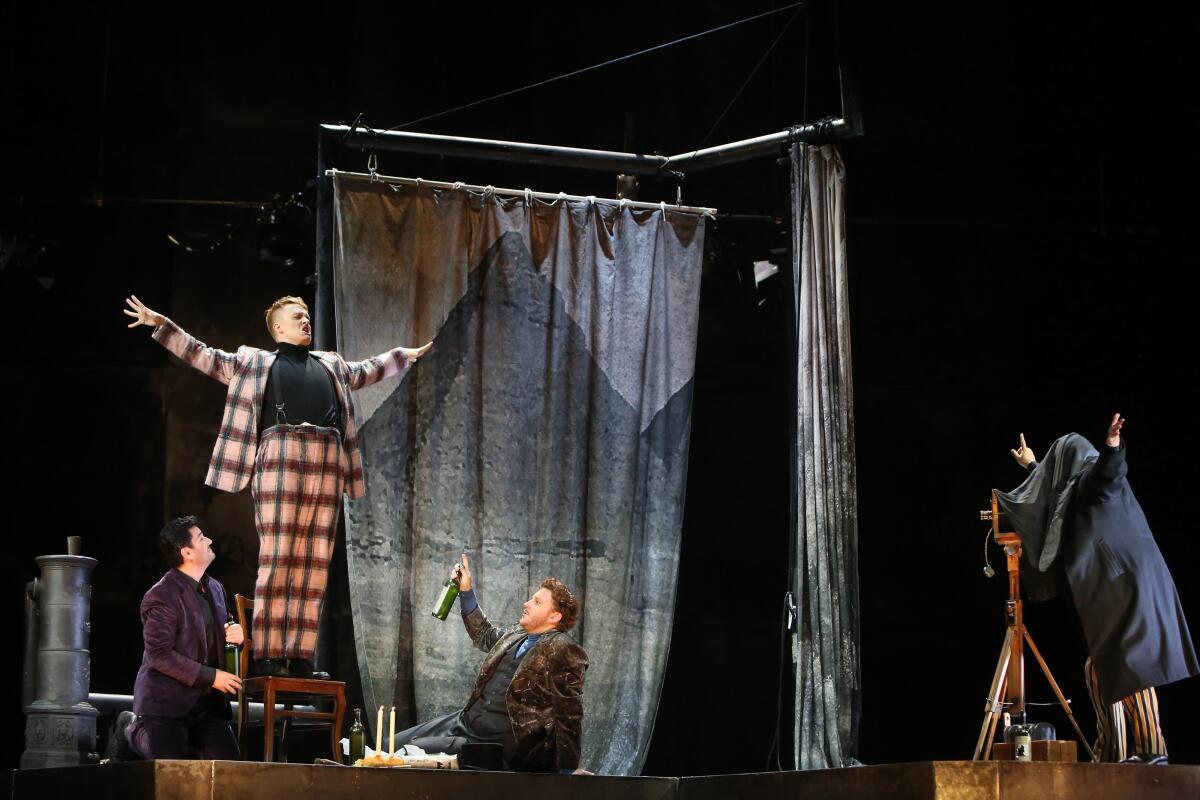
- Share via
It’s those hot and sweaty days before the Santa Anas kick in. Which means it’s time for everything fall arts preview. I’m Carolina A. Miranda, staff writer at the Los Angeles Times, with your guide to Devil Wind Season:
At the opera
Barrie Kosky‘s production of Puccini’s “La Bohème” opens the new season at L.A. Opera on Saturday. One lingering question is whether it will take attention away from the ongoing sexual harassment scandal surrounding the company’s artistic director, Plácido Domingo, notes Times classical music critic Mark Swed.
Certainly, the Australian Kosky is a force to be reckoned with, a director who has “dominated the European opera scene,” writes Swed, with an “outrageous new production” of Offenbach’s “Orphée aux Enfers” (Orpheus in the Underworld) and a staging of Tchaikovsky’s “Eugene Onegin” that “wowed.” What the director would like to do now is create a new ground-up production in the U.S. — specifically Los Angeles. Writes Swed: “Maybe the ‘Bohème’ will be the ticket.”
On the subject of Domingo: The American Guild of Musical Artists, the union that represents opera workers, has launched its own investigation into the allegations.
Classical notes
Spanish conductor Jaime Martín, the incoming director of the Los Angeles Chamber Orchestra, sits down for an interview with contributor Scott Timberg. “Los Angeles for me was not only a city of palm trees and Muscle Beach,” says Martín. “It was also the city of the Los Angeles Philharmonic, Mehta, Salonen ...”
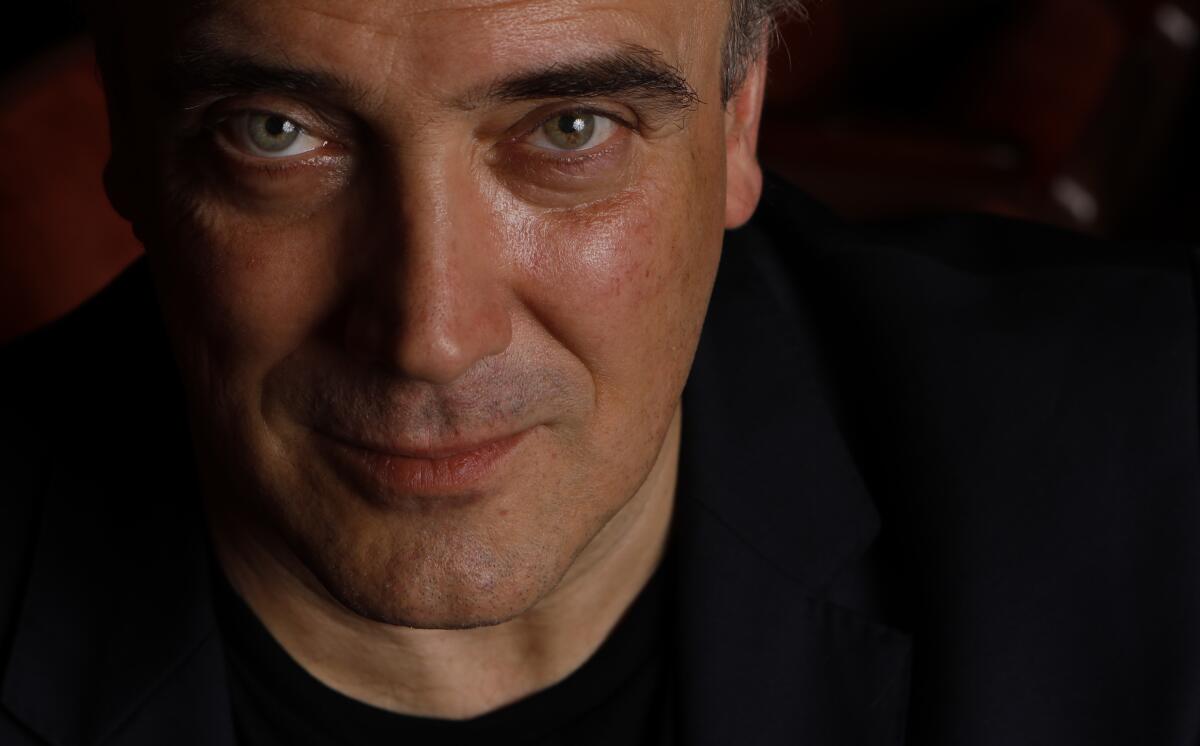
There are 2,000 professional orchestras in the U.S. The number led by black conductors can be counted on one hand, reports Tim Greiving. Which makes the appointment of Anthony Parnther as musical director of the San Bernardino Symphony Orchestra especially notable.

Mark Swed reports on a performance by new music collective L.A. Signal Lab at Monk Space in Koreatown, an astronomically inspired work titled “URSA” that he thinks is “destined to put the 4-year-old [group] on the terrestrial map.”
And he checks out the new-music series “Silence at Descanso” at the Descanso Gardens in La Cañada Flintridge. Organized by Anna Bulbrook, of the band Airborne Toxic Event, and conductor Christopher Rountree, of Wild Up, the experience, writes Swed “was like wandering through this sylvan wonderland without the signs directing you.”
Plus, Swed rounds up the best classical concerts to see in the upcoming season, for Sunday Calendar’s fall arts preview. Coming next month: L.A. Phil conductor emeritus Zubin Mehta, conductor laureate Esa-Pekka Salonen and music director Gustavo Dudamel together to celebrate the orchestra’s centennial at Walt Disney Concert Hall.
Looting Maya sites
Christopher Knight has a fascinating report on the case of a Maya sculpture that was almost certainly stolen from the archaeological site of Piedras Negras in Guatemala. The piece, which shows a bird headdress, was scheduled to go to auction in Paris but has since been withdrawn. Knight delves into the importance of the carving, citing archaeologist Donna Yates, who specializes in looted antiquities: “The absolute only way for [the stela] to have left Guatemala was in complete violation of Guatemalan law.”
In the galleries
L.A. painter Lari Pittman has a comprehensive career retrospective landing at the Hammer Museum later this month. I spoke with the Colombian American painter, who spent his formative years in South America, about how language — specifically Spanish — has shaped his worldview and his ornate canvases. “In my work there is hyperbole and exaggeration,” he says. “The over-theatricality of the work, the hyperbolic nature of the work, that comes from how language shapes the interior world.”
Plus, Terry R. Myers has a terrific Q&A with Pittman in the Brooklyn Rail that is all about painting.
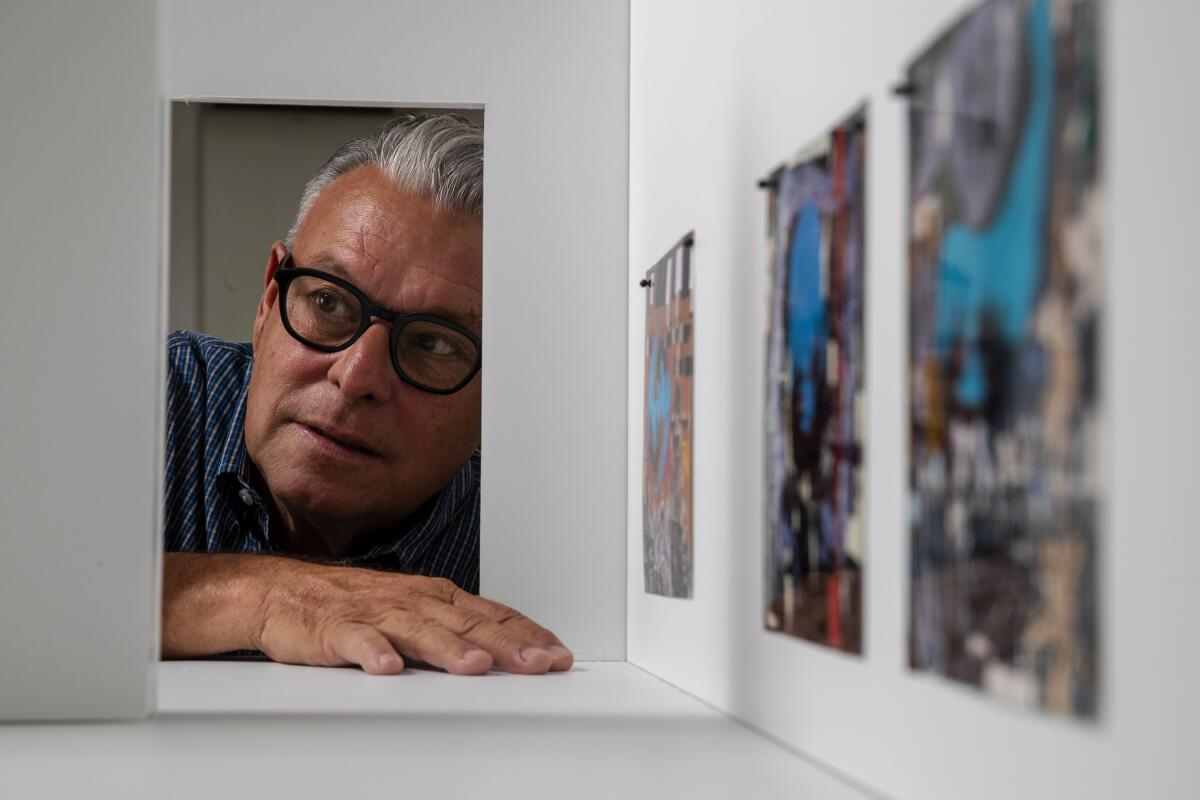
Times art critic Christopher Knight rounds up the must-see shows for fall, including an exhibition marking the Huntington Library‘s centennial.
And Deborah Vankin reports on a new exhibition, “Facing Survival,” at USC’s Fisher Museum of Art, a show of portraits, transcripts and interactive video of Holocaust survivors by artist David Kassan that was organized with the Steven Spielberg-founded USC Shoah Foundation, which has collected 55,000 testimonials from survivors of genocide. The exhibition comes at a key moment, says foundation director Stephen D. Smith: “We’re in a place I never thought that we would be again.”
Unrelated: some fine Larry Bell sculptures just popped up in MOCA‘s courtyard.
Everything dance
Choreographer Laura Karlin was driving around L.A. in 2007 when she heard a report about British code breaker Alan Turing on NPR and was inspired to pull over and jot a few notes. Those notes turned into “Formulae & Fairy Tales” premiering at the Broad Stage this weekend. The work is not “Alan Turing, the ballet,” Karlin tells The Times’ Makeda Easter. “We really wanted this to be inviting to a wide array of people ... without being condescending or overly simplified.”
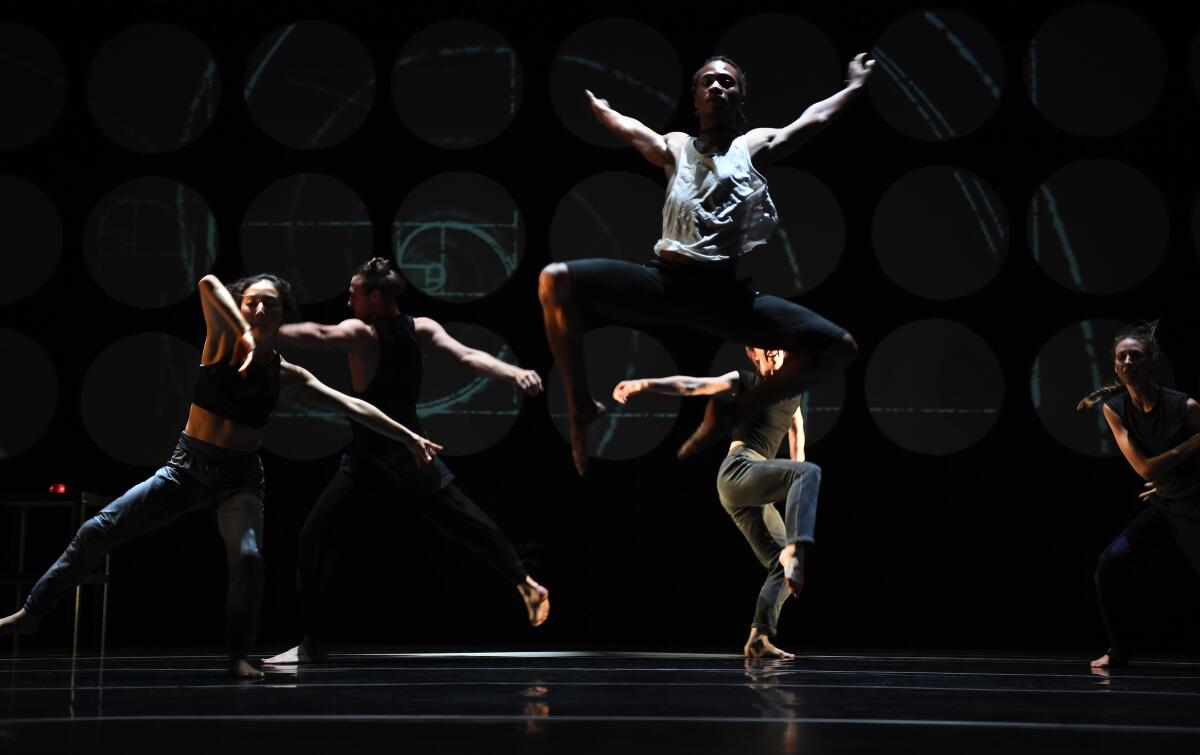
L.A. director Louis J. Horvitz and choreographer Anita Mann are at work on a Dance Hall of Fame.
Easter also has all the best dance performances to check out this fall, including Matthew Bourne’s “Swan Lake.”
On the stage
At the Ahmanson Theatre, class is in session: specifically, John Leguizamo’s “Latin History for Morons,” a comedic one-man show that takes the audience through a cram course of Latino history — history that is quite frequently U.S. history. “Trump doesn’t figure prominently,” writes Times theater critic Charles McNulty, “but he’s the racist elephant in the room, the embodiment of the ignorance and bigotry Leguizamo is trying to correct.”
Contributor Philip Brandes reports on a “superb revival” of D.L. Coburn‘s Pulitzer Prize-winning play, “The Gin Game,” at Will Geer’s Theatricum Botanicum, a work whose comedic overtones nonetheless reveal pain underneath.
Erik Patterson‘s dark comedy “Handjob,” on view at the Echo Theater Company, explores the ways in which theater “could or should reflect life,” writes The Times’ Daryl H. Miller. As part of that, the title sex act is performed in full view (albeit with prosthetics), “but the illusion is unsettlingly convincing.”
Naturally, we’ve got all the fall feels: McNulty chooses the best plays to see this season, including a collection of one-acts by filmmaker Ethan Coen, while The Times’ Matt Cooper picks through all the fall musicals for the must-sees. (Hint: “Frozen.”)
Passages
Robert Frank, the Swiss-born lensman who helped reinvent the from with his stark depictions of quotidian life in the U.S. in his book “The Americans” has died at 94.
Critic Fred Kaplan looks at how “The Americans” shook the world of art and photography by putting “less emphasis on compositional beauty, more on improvisational discovery.”
In an appreciation, RJ Smith, author of a biography on Frank, remembers the time the photographer shot a notorious, little-seen doc on the Rolling Stones — a project with roots in Los Angeles. It’s a must-read.
I’ve always had a soft spot for Frank’s book “Peru” which captures my father’s native country with a combination of respect and stark honesty that documents without exoticizing.
Ready for the weekend
I’ve got my weekly listing of all things artsy fartsy in Datebook, including the immersive installation by Brazilian artist Ernesto Neto that is sprouting at a gallery in Hollywood.
And Matt Cooper has all the weekend picks, including a family festival at the La Brea Tar Pits.
Your support helps us deliver the news on culture — and this newsletter. Subscribe to the Los Angeles Times.
In other news
— Why U.S. homes are so big.
— Architecture critic Michael Kimmelman has a fascinating report on a highly controversial new plan for a cable car system that would connect Jewish holy sites in East Jerusalem.
— Plus, Karrie Jacobs looks at how some architectural firms are rethinking the hard line between buildings and nature.
— In Hollywood, a Midcentury Modern library is reborn as a homeless shelter.
— There are some new faces cropping up in L.A. museums: Gabriela Urtiaga has been named chief curator at the Museum of Latin American Art in Long Beach, while Cameron Shaw takes over as deputy director and chief curator at the California African American Museum.
— With a new season approaching, Baltimore Symphony Orchestra musicians and management are still locked in contract negotiations.
— Sort of related: Kate Wagner on classical music’s illusions of meritocracy.
And last but not least...
A supercut of Alex Trebek saying the word “genre.”
More to Read
The biggest entertainment stories
Get our big stories about Hollywood, film, television, music, arts, culture and more right in your inbox as soon as they publish.
You may occasionally receive promotional content from the Los Angeles Times.


